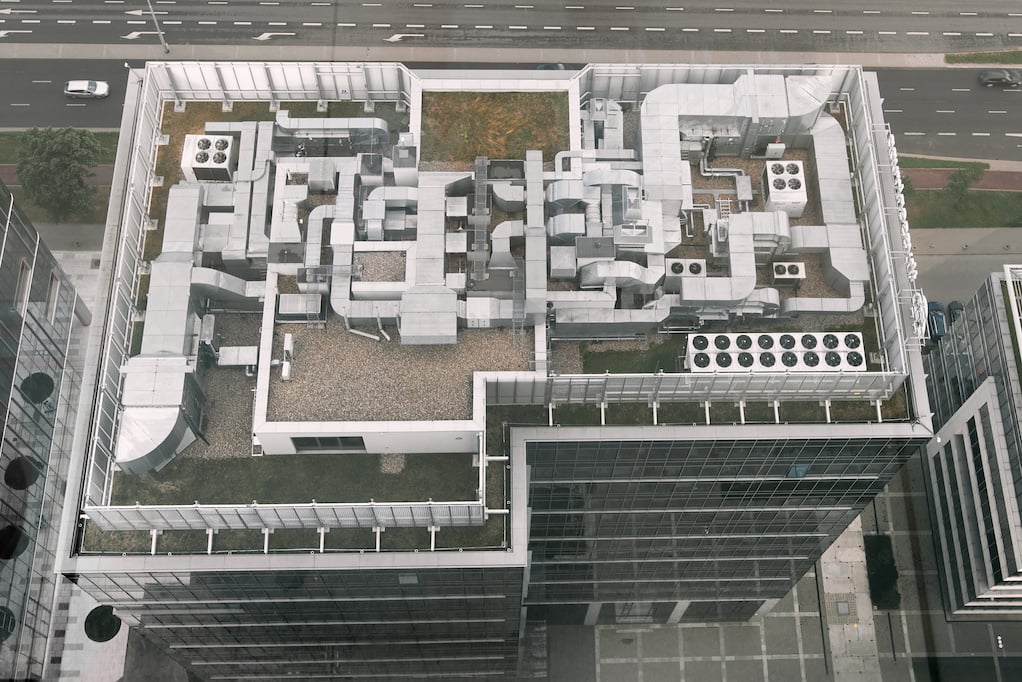In this article, you'll discover:
- How energy audits help spot and fix inefficiencies.
- Benefits of LED lighting for energy savings and office comfort.
- Importance of updating HVAC systems for efficiency and compliance.
- Tips for tenants to improve energy performance and cut costs.
With a slate of new ESG and LEED-friendly legislation on the horizon, commercial buildings and their energy consumption will be under increasing scrutiny.
Companies everywhere are attempting to boost their eco-reputations (and avoid some serious fines), but they can't with that with clunky, gas-guzzler office spaces. As a result, energy efficient buildings are leading the pack in terms of demand for commercial buildings.
Reducing energy consumption offers corporations two-pronged benefits. Because beyond boosting their ESG egos, they are able to transition to alternative means that provide more cost efficiency in the long term.

So let's discuss some ways tenants can achieve enhance energy efficiency, reduce energy costs and energy consumption and improve the performance of individual offices. (Doing so will most definitely provide some relief on your company's EBITDA because operating expenses can easily become the most expensive aspect of each individual lease.)
Conduct an Energy Audit
In the pursuit of energy efficiency, conducting energy audits is a pivotal step for office users and owners aiming to reduce energy consumption and costs. Energy audits involve a comprehensive assessment of a building's energy use to pinpoint areas of inefficiency.
Now companies can take this further by analyzing the building's energy consumption patterns with AI technology. Such an energy audit can identify the biggest culprits of energy waste. This insight allows office managers and facility teams to prioritize improvements that offer the most substantial energy savings.
Energy audits delve into various aspects of a building's operations, including lighting, HVAC systems, insulation, appliances, and more. They may also assess the building envelope for potential leaks or areas of poor insulation that contribute to energy loss.
One of the key benefits of energy audits is their ability to provide a detailed roadmap for energy reduction. Based on audit findings, actionable recommendations are generated, outlining specific measures to enhance energy efficiency. These could range from upgrading lighting fixtures to installing programmable thermostats and optimizing heating, ventilation, and air conditioning systems.

Moreover, the impact of reducing energy consumption in individual commercial buildings extends beyond just cost savings for that particular office. It has a cascading effect, contributing to energy conservation across an entire portfolio of properties.
Incorporating the insights gained from energy audits, offices can implement targeted strategies to enhance energy efficiency, thereby not only reducing operational costs but also aligning with broader sustainability goals. So let's take a look at methods to apply to improve the performance of the two most common, significant energy expenditures: Lighting and HVAC.
Lighting
Energy-efficient lighting is a cornerstone of modern office building design, offering a myriad of benefits for both the environment and the occupants. Traditional incandescent bulbs have largely given way to more advanced options, such as LED (Light Emitting Diode) lights, which are known for their energy savings and longevity.
LED lighting systems consume significantly less energy compared to their counterparts, translating into reduced electricity bills and a lighter carbon footprint. They emit very little heat, ensuring a cooler working environment and further contributing to energy conservation.

Moreover, LED lighting systems are highly versatile, allowing for effective control of brightness and color temperature. This not only enhances visual comfort but also supports employee well-being and productivity. Many modern LED systems are also equipped with smart sensors and automation features, adjusting lighting levels based on natural light availability and occupancy, minimizing wastage.
Occupancy sensors can also be installed to limit illumination of unoccupied areas, which can limit the electricity consumed over time. Installing controls to allow dimming or bi-level switching of lights and photosensors to control outdoor lighting can also help to reduce energy usage and costs. These measures allow for more precise control of lighting levels and prevent unnecessary energy consumption.
Energy-efficient lighting isn't just about reducing energy consumption. It also contributes to a more sustainable office environment, aligning with the growing global focus on eco-conscious practices. By making the switch to LED lighting and embracing smart control solutions, office buildings can significantly cut energy expenses, create a more comfortable workspace, and contribute to a greener future.
Learn other cutting-edge techniques to streamline your CRE portfolio by subscribing to our blog!
Heating and Cooling Systems (HVAC Systems)
Balancing air quality with energy efficiency is critical in today's office buildings. In a post-covid work environment, people are holding their employers at higher standards regarding office safety and cleanliness. Installing better ventilation systems is a great step to reducing risk.
Finding the equilibrium between minimizing usage to save energy and ensuring that the air circulated is fresh and clean is the key challenge.
If the space is second-generation or already has HVAC systems, it is critical to ask your landlord’s team how old they are. While the landlord should be the one maintaining them for sure, an antiquated system will make it difficult to give you the correct heating, ventilation and air-conditioning (HVAC). You may be responsible for all or part of the HVAC costs for your space and/or a prorated portion of the common areas within the building. The older the system, the more inefficient they will be. Therefore, upgrading and optimizing cooling systems is paramount.

Transitioning to modern cooling units, such as those utilizing eco-friendly refrigerants, can significantly reduce energy consumption. Regular maintenance and timely replacements of filters, fans, and other components ensure that the HVAC system operates at its peak efficiency. This is especially critical as HVAC ducts and systems are being held to higher standards in terms of energy efficiency.
These new expectations are aggressive as the goal is carbon neutrality. And this may outdate a significant portion heating and cooling units that could have even been recently included in the building.
|
"Even if you got a new HVAC system over the last four years, it is not likely zero carbon… The standard of zero emissions requires you to consider other technologies that are available but expensive. This means your previous equipment is suddenly obsolete." - Darrell Wheeler, Vice President and Senior Credit Officer at Moody’s |
Most of these costs should fall under the responsibility of building owners. But, know that they may be looking to offset the total cost of updating their building to comply with carbon-neutral regulations. Learn How to Protect Your Opex Budget from Green Restrictions.
If your system is not up to par, it is time to make sure it is. While it may not be necessary to redo your entire HVAC system, there are precautions you can take to improve its quality.
|
"To allow updated heating, ventilation, and air conditioning (HVAC) systems to operate at optimal levels, walls must be insulated, building envelopes must be sealed, and the entire building must be as airtight as possible. " - GlobeSt |
Many employers are equipping their HVAC systems with stronger filtration elements. Protective ventilation practices are recommended by the CDC to halt the growth and spread of airborne contagions. For instance, you can install a High-Efficiency Particulate Air (HEPA) filter. They are more efficient at capturing air particles, especially smaller ones. According to the CDC, HEPA filters are about 99.97% efficient at capturing human-generated viral particles associated with SARS-CoV-2. Doing so will optimize the energy used to ventilate clean air throughout the office.
How Corporate Tenants Can Save Energy
The evolving landscape of energy-efficient practices is not without its challenges, particularly in the realm of carbon neutrality. Modernizing HVAC systems to meet stringent standards for zero emissions requires substantial investments. Yet, the benefits of such upgrades in terms of environmental sustainability and employee well-being cannot be overstated.
Incorporating these strategies not only contributes to greener operations but also safeguards the bottom line. The convergence of energy efficiency, reduced operational costs, and improved indoor environments is a powerful incentive for offices to embrace these transformative measures.
Stay on top of the latest ways to streamline your CRE portfolio by subscribing to our blog!








